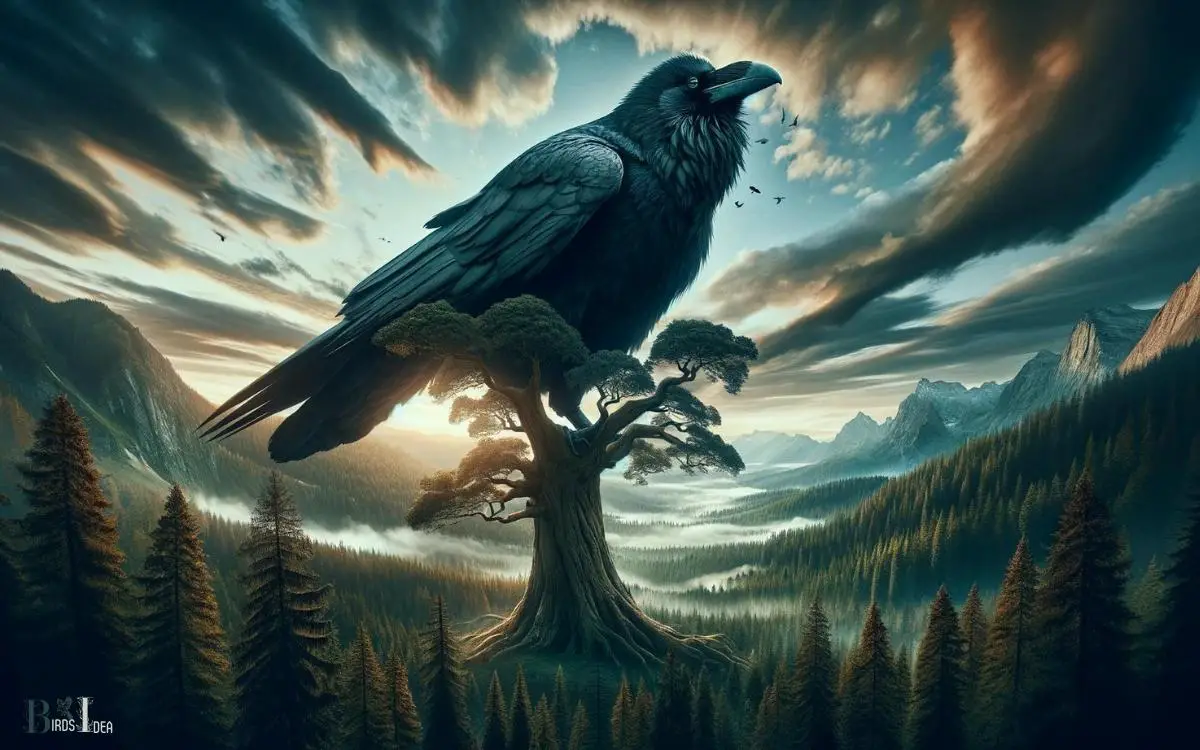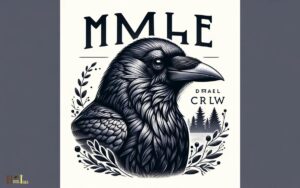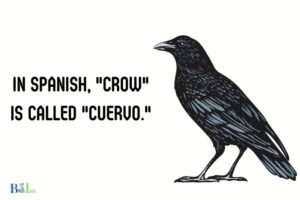What is the Biggest Crow? Common Raven (Corvus corax)!
The largest crow is the Common Raven (Corvus corax), known for its impressive size and intellect among the corvid family.
The Common Raven stands out as the largest crow species with an average length of 54 to 67 cm (21 to 26 inches) and a wingspan that can reach up to 150 cm (59 inches).
This bird is not only notable for its size but also for its intelligence and adaptability. Ravens are widespread across the Northern Hemisphere, found in diverse habitats from Arctic tundra to desert landscapes.
Recognized by their glossy black plumage and deep, resonating call, Common Ravens play a vital role in their ecosystems as both scavengers and predators.

Key Takeaway
The Fascinating World of Crows
The fascinating world of crows is a subject of great interest and study among ornithologists and researchers.
Crows are highly intelligent birds known for their problem-solving abilities and complex social structures.
They exhibit a wide range of behaviors, including tool usage, advanced communication, and even a rudimentary form of play.
Their adaptability to various environments, from urban cities to rural landscapes, has captured the fascination of scientists and bird enthusiasts alike.
Furthermore, crows have long been a part of human folklore and mythology, symbolizing different traits and characteristics across various cultures.
Understanding the behavior and ecology of crows not only provides insights into avian evolution but also sheds light on the intricate dynamics of the natural world.
Characteristics of Crow Species
One of the most striking characteristics of crow species is their remarkable adaptability to diverse environments.
Crows are highly intelligent birds known for their problem-solving skills and ability to thrive in various habitats, including urban areas, forests, and farmlands.
Their scavenging nature allows them to feed on a wide range of food sources, from small insects to carrion, making them highly adaptable to changing conditions.
Additionally, crows are social birds, often forming large, cohesive flocks that provide protection and opportunities for cooperative foraging.
Their distinct vocalizations and complex communication behaviors further contribute to their success in different environments.
| Characteristics | Description |
|---|---|
| Adaptability | Thrive in diverse habitats |
| Social Behavior | Form cohesive flocks for protection and foraging |
| Communication | Complex vocalizations and communication behaviors |
The Largest Crow: Size and Weight
Discussing the size and weight of the largest crow species, it is evident that these characteristics play a significant role in their physical adaptations and ecological niche.
The largest crow, the Common Raven (Corvus corax), has an impressive size and weight, with the following key attributes:
- Length: The Common Raven can reach up to 27 inches in length, making it one of the largest passerine birds.
- Wingspan: With an impressive wingspan of up to 53 inches, the Common Raven exhibits remarkable aerodynamic capabilities.
- Weight: Adult Common Ravens can weigh between 24 to 57 ounces, showcasing their substantial build and strength.
These physical features allow the largest crow to thrive in various habitats and fulfill its ecological role as an intelligent and adaptable species.
Unique Features of Giant Crows
With an impressive wingspan and substantial build, giant crows exhibit unique features that contribute to their ecological success and adaptability.
These remarkable birds possess a range of distinctive attributes that set them apart from their smaller counterparts.
| Unique Features | Description |
|---|---|
| Enhanced Intelligence | Giant crows display advanced problem-solving abilities and tool usage, setting them apart as highly intelligent birds. |
| Powerful Beak | Their robust beaks enable them to crack open tough nuts and seeds, giving them a diverse and adaptable diet. |
| Strong Vocalizations | Giant crows have a powerful and varied vocal range, allowing for complex communication within their social groups. |
| Exceptional Memory | They demonstrate exceptional memory, allowing them to remember food storage locations and maintain complex social structures. |
| Agile Flight | With their impressive wingspan, giant crows exhibit agile and graceful flight, enabling them to cover vast distances in search of food and resources. |
These unique features contribute to the giant crows’ ability to thrive in diverse environments, making them a fascinating subject of study for those who value freedom and adaptability.
Distribution and Habitat
The distribution and habitat of giant crows vary widely across different regions, reflecting their adaptability and resilience.
- Varied Environments: Giant crows can be found in diverse habitats including forests, grasslands, urban areas, and coastal regions, showcasing their ability to thrive in different environments.
- Global Presence: These majestic birds are distributed across continents, from the Americas to Asia, indicating their widespread presence and ability to adapt to various climates and ecosystems.
- Nesting Sites: They are known to build nests in tall trees, cliffs, and even human-made structures, demonstrating their resourcefulness and flexibility in selecting suitable nesting locations.
As we explore the distribution and habitat of giant crows, it becomes evident that their ability to thrive in diverse environments has contributed to their widespread presence.
This adaptability also plays a crucial role in understanding the conservation status of big crow species.
Conservation Status of Big Crow Species
The conservation status of large crow species is a matter of significant concern due to various environmental threats and human activities impacting their populations.
Many big crow species, such as the Hawaiian crow (Alalā) and the Mariana crow, are currently listed as critically endangered due to habitat loss, predation, and disease.
The destruction and fragmentation of their natural habitats, as well as the introduction of invasive species, have had detrimental effects on these crow populations.
Conservation efforts are being implemented to mitigate these threats, including habitat restoration, captive breeding programs, and predator control.
Public awareness and community involvement are also crucial in ensuring the survival of these magnificent birds.
It is imperative that concerted efforts continue to be made to protect and conserve these iconic crow species before it is too late.
Conclusion
The largest crow species, such as the Common Raven and the Thick-billed Raven, exhibit remarkable size and weight compared to other crow species.
Despite their impressive characteristics, these giant crows face threats to their habitats and populations due to human activities.
It is crucial for us to recognize the importance of preserving these magnificent birds and their habitats to ensure their survival for future generations. Together, we can work towards conserving these majestic creatures and their ecosystems.






